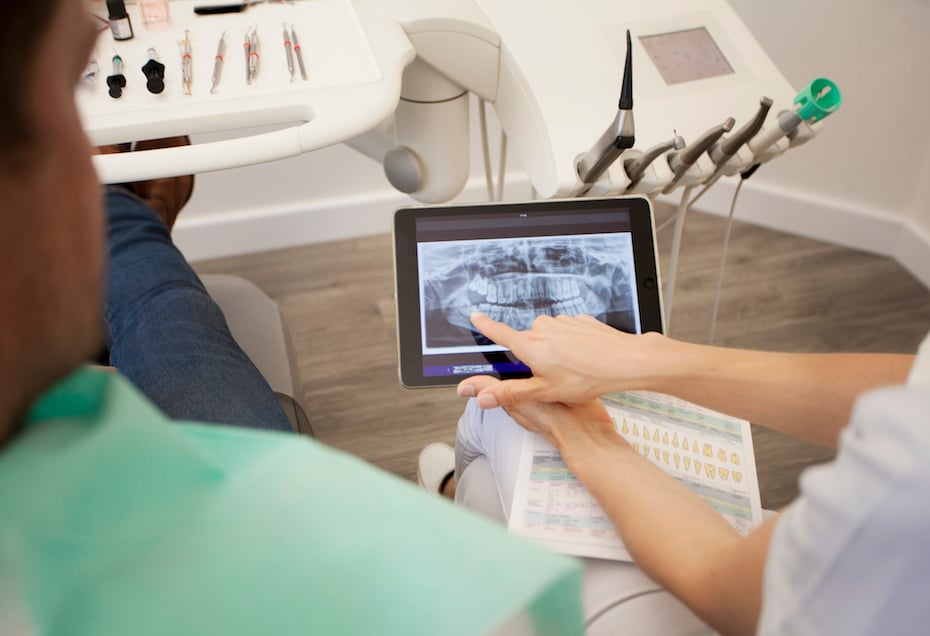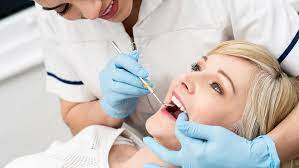Technology is revolutionizing every facet of modern life, and dentistry is no exception. Over the past few decades, technological advancements have reshaped how dental professionals supply care and patients’ experiences in dental clinics. From digital diagnostics to innovative treatments, we will explore the profound changes technology is conveying to the future of dentistry.
Technology that is changing the future of dentistry
- Digital Imaging and Diagnostics
One of the most significant technological advancements in dentistry has been the shift from traditional film-based X-rays to digital radiography. Digital imaging proposes multiple advantages, including reduced patient radiation exposure, faster image acquisition, and enhanced image quality. Dentists can now instantly view and manipulate digital X-rays, enabling more accurate diagnoses and treatment planning. Furthermore, three-dimensional (3D) imaging techniques, such as cone beam computed tomography (CBCT), provide detailed, high-resolution oral and maxillofacial region images. CBCT is invaluable for assessing complex cases, such as dental implant planning, orthodontic treatment, and oral surgery, with precision and minimal radiation exposure.
2. CAD/CAM Technology
Computer-aided design and manufacturing (CAD/CAM) technology have transformed how dental restorations are designed and fabricated. With CAD/CAM, dentists can create digital impressions of patients’ teeth and design custom restorations like crowns, bridges, and veneers using specialized software. These digital designs are then sent to an in-office milling machine or a dental laboratory for fabrication, resulting in precise, durable, and aesthetically pleasing restorations. CAD/CAM technology streamlines the therapeutic process and reduces the time patients spend in the dental chair, eliminating the need for messy traditional impressions and multiple appointments.
3. Teledentistry and Telehealth
The advent of telehealth and telemedicine has significantly impacted dentistry, particularly in recent years. Teledentistry allows patients to consult with dental professionals remotely using video conferencing and digital communication tools. This technology is precious for initial assessments, follow-up appointments, and consultation on minor dental issues. During the COVID-19 pandemic, teledentistry was crucial in maintaining patient access to dental care while minimizing in-person contact. Although it cannot replace all aspects of traditional dentistry, teledentistry offers convenience, flexibility, and increased accessibility to dental services.
4. 3D Printing
Three-dimensional printing, or additive manufacturing, has gained traction in dental. Dentists and dental laboratories use 3D printing technology to produce various dental appliances, including models, surgical guides, dentures, and orthodontic devices. 3D printing permits for precise and cost-effective production of these items, with the flexibility to customize designs to meet the unique needs of each patient. This technology enhances the accuracy and efficiency of dental workflows, lessens material waste, and enhances the patient experience.
5. Artificial Intelligence (AI)
Artificial intelligence is making inroads into dentistry, particularly in diagnostic and treatment planning processes. AI algorithms can analyze vast amounts of patient data, enclosing radiographs and clinical records, to assist dentists in pinpointing oral health issues, predicting treatment outcomes, and recommending personalized treatment plans. Furthermore, AI-powered technologies are being developed to improve patient communication, streamline appointment scheduling, and enhance dental clinic patient experience.
6. Robotics in Dentistry
Robotics is gradually finding its way into dental practices, with the potential to transform certain procedures. Robotic-assisted surgeries, such as dental implant placement, propose unparalleled precision and reduce the margin for error. These robotic systems are designed to work with human dentists, enhancing their capabilities and improving treatment outcomes. While adopting dental robotics is still in its early stages, it holds promise for further enhancing the precision and efficiency of various dental procedures.
7. Virtual Reality and Augmented Reality
Virtual reality (VR) and augmented reality (AR) are being explored for dental education and training. These immersive technologies allow dental students and practitioners to simulate various clinical scenarios, practice procedures, and refine their skills in a virtual environment. VR and AR applications can also aid in patient education by visualizing treatment plans and outcomes more interactively and understandably.
8. Enhanced Patient Experience
Technology is also enhancing the overall patient experience in dental clinics. Digital patient management systems enable efficient appointment scheduling, electronic health records, and secure communication between patients and dental offices. Additionally, technologies like chairside monitors and intraoral cameras permit patients to regard their dental conditions and treatment options, fostering better communication and understanding.
Technology is undeniably changing the future of dentistry, offering a myriad of benefits to both dental professionals and patients in places such as Luminé Dental Aesthetics. From improved diagnostic capabilities to enhanced treatment outcomes and patient experiences, the impact of technology in dentistry is profound. As technology advances, dental practitioners need to embrace these innovations responsibly and adapt to the evolving landscape of modern dentistry, ultimately providing better care and outcomes for their patients.








Leave a Reply